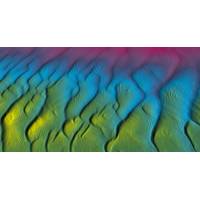
AI & Seabed Mapping Project Recognized
GeoAcoustics, in partnership with the University of East Anglia’s School of Computing Sciences, was named as a finalist in the category of Technical Excellence at the national Knowledge Transfer Partnership awards, following the co-development of an AI solution aimed to improve the speed and ease of real-time seabed mapping.GeoAcoustics, a manufacturer of sonar equipment for seabed mapping, approached UEA’s School of Computing Sciences, and feasibility study was first undertaken to see if AI technology could automatically remove unwanted noise from sonar data. This was carried out by
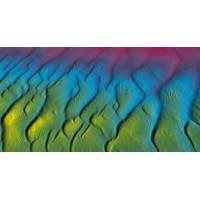
Tech File: AI-powered Bathymetric Data Processing
GeoAcoustics released GS4 software v1.0.25 for GeoSwath bathymetric sonars, adding several upgrades including an Artificial Intelligence dataprocessing system developed in collaboration with the University of East Anglia.The software update is available free for customers already operating GS4 software v1.0.24 and will be demonstrated at OCEANS 2023 in Limerick, Ireland. The new AI processing augments the existing automated filtering in the GS4 software by removing surplus and undesired data autonomously; during acquisition, the system is designed to log clean data, without any user intervention in

New Software Introduces AI-powered Bathymetric Data Processing
Hydroacoustic technology specialist GeoAcoustics Ltd has officially released GS4 software v1.0.25 for GeoSwath bathymetric sonars, adding several upgrades including an Artificial Intelligence data processing system developed in collaboration with the University of East Anglia. The software update is available free of charge for customers already operating GS4 software v1.0.24.The new AI processing augments the existing automated filtering in the GS4 software by removing surplus and undesired data autonomously; during acquisition, the system is designed to log clean data, without any user intervention
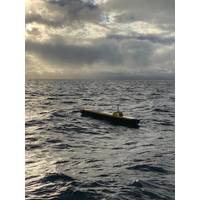
AutoNaut Completes a 16-week, 4,000-mile Mission on the Atlantic continental shelf break
in the famously rough Southern Ocean. Destructive drop and ice-impact tests were carried out in phase one to test newly designed rudder, struts, foils, fixing inserts, hatches, and hull parts. The 4,000 nautical mile voyage validated these improvements.In the initial project the University of East Anglia used its ‘sea-ice chamber’ facility to test all aspects of anti-icing and the effects of extreme cold and ice abrasion on build materials and PV panels. This proving trial showed the anti-icing solution remains effectively hydrophobic after 115 days at sea. It had
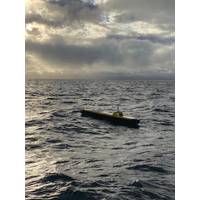
Case Study: Autonaut Put to the Test
in the famously rough Southern Ocean. Destructive drop and ice-impact tests were carried out in phase one to test newly designed rudder, struts, foils, fixing inserts, hatches, and hull parts. The 4,000 nautical mile voyage validated these improvements.In the initial project the University of East Anglia used its ‘sea-ice chamber’ facility to test all aspects of anti-icing and the effects of extreme cold and ice abrasion on build materials and PV panels. This proving trial showed the anti-icing solution remains effectively hydrophobic after 115 days at sea. It had
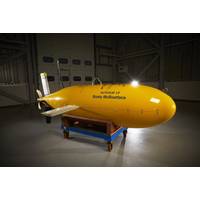
Subsea Robotics: Boaty McBoatface Heads to Antarctica
ship-based expedition that will investigate atmospheric and oceanic conditions on two ice shelves on the coast near Thwaites Glacier. Boaty McBoatface is a Autosub Long Range (ALR) vehicle whicih will travel under the glacier to largely unchartered territory, enabling scientists from the University of East Anglia (UEA) to identify how variations in its conditions may influence the behavior and stability of ice shelves in the region. The study will shed light on how badly the glacier is being weakened by warming water and produce research that will benefit scientists around the world studying ice
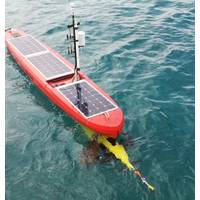
Unmanned Marine Systems, Squared
, and other academic partners, have successfully tackled the first challenge and now they’re working on the second, through a number of related projects.“This sort of technology offers a lot of opportunities for us,” says Karen Heywood, who leads the glider programme at the University of East Anglia (UEA), and who came up with the idea. “It means we can deploy gliders or other vehicles in the middle of the ocean without having to send a ship there. We can be more efficient. We can choose when to deploy it,” she told the Marine and Autonomous Technology Showcase (MATS) conference
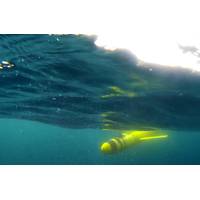
Marine Robots Detect Whales in the Deep Ocean
eerie whistles made by pods of pilot whales. There were also recordings of fin whale, the second largest animal in the world, and small numbers of harbor porpoise. Sources of noise pollution including ship engines and seismic surveys were also detected. Pierre Cauchy, a PhD student at University of East Anglia who is analyzing some of the acoustic data, said, “This successful trial clearly demonstrates how marine robots can be used to listen for noise in the ocean. It was particularly exciting to record a sperm whale, and my analysis has revealed that it was probably about 12 m long and
World Temperatures Hit New High in 2016
over land and the oceans in 2016 were 0.94 degrees Celsius (1.69 degrees Fahrenheit) above the 20th-century average of 13.9C (57.0F), according to the U.S. National Oceanic and Atmospheric Administration (NOAA). U.S. space agency NASA reported almost identical data, and the UK Met Office and University of East Anglia, which also track global temperatures for the United Nations, said 2016 was the hottest year on record. Temperatures, lifted both by man-made greenhouse gases and a natural El Nino event that released heat from the Pacific Ocean last year, beat the previous record in 2015, when 200 nations



 February 2024
February 2024





